Retention Marketing: The 3 Pillars of Profitable Ecommerce Growth
Search Retention Marketing in good ole Google, and what you’ll find is mostly… a bunch of fluff. Some stats, and quotes, and charts… a software pitch.
This is not one of those posts.
In fact, here at Wavebreak, we’ve dubbed 2020 The Year of Retention. And it’s based on a simple tenant for ecommerce stores: When growth comes, retention should follow.
The trend we see over and over goes something like this:
Fast-growing ecommerce store finds initial success on the back of one or two highly successful campaigns, product mentions, marketing tactics, etc…
Upon which they build and double-down on team, inventory, and more of what’s working…
And in doing so increase the underlying risk in their business.
And when that campaign, publicity, or tactic stops working, there hasn’t been a concerted effort to invest in alternative lead generation avenues and well… we have a problem.
So in 2020, the relationships you already have will become even more important for the continued success of your store. Don’t just throw stuff at the wall and see what sticks. Don’t just hope customers continue to come in through SEO and Facebook. Instead FOCUS on your existing customer base and email list that you’ve spent years building.
This is our way of fixing your attention firmly on retention marketing, of which there are three pillars.
The 3 Pillars of Profitable Growth
Below we lay out the 3 pillars of successful ecommerce retention, and the impact they can have on your business.
Retention Marketing Pillar #1: The Numbers
Before we get too far down the road on this whole “relationship-building” stuff, we need to know whether the juice is worth the squeeze. In other words: What can retention marketing do for your revenue vs. what’s happening today?
For example, a baseline effort in most cases can add 10% to general revenue for most stores. But that’s just the beginning. We’ll walk you through the “math of retention,” step-by-step.
Retention Marketing Pillar #2: Brand
Real relationships with customers are what build the reputation and brand loyalty that keeps them coming back, again and again. Done correctly, it can be far more powerful and profitable than simply cranking through the ad spend on a FB campaign. (There’s a reason why Apple users vehemently defend their products even though they haven’t innovated in a decade.)
We’ll talk about the “supposed” retention practices to avoid that damage brand (looking at you quick-revenue-flash-sale emails), and alternatively the essentials for brand-build that protect and enhance over time.
Retention Marketing Pillar #3: Seasonality
How many of your peers do you hear lamenting about the slow season? Or on the flip side, complaining about the fire drills during “hot season,” running around like chickens with their heads cut off trying to jack up revenue as much as possible before the wave has passed?
The ability to both maximize revenue during upturns and mitigate impact of downturns throughout the year almost sounds like a superpower. But that’s the risk-mitigation tool you can add to your toolbox with a focus on retention. We’ll discuss how this works in practice.
So without further ado… let’s dig in!
The First Pillar: Retention Marketing By The Numbers
First, we shall dig into the numbers. But before we do…
If you’re like me, you have ZERO desire to head back into the classroom for a finance lecture.
Let me do you a favor and get to the punchline first. Here’s the question you really care about:
Question: What impact can retention marketing have on your store?
Answer: See for yourself.
We’ll answer that question with a quick exercise.
So stop scrolling for a second, and plug in some rough numbers:
Note: We’ve framed this calculation around email marketing (surprise, surprise) because it’s (a) more concrete than the more general “retention marketing” category, and (b) we have a rock-solid framework of what’s achievable.
But just know that all retention marketing efforts work on the same principles: getting more out of what you’ve already got.
Did you do it?
I’ll wait…
…
Okay, now let’s reflect for a moment.
What does the number that popped out mean to you?
If it’s significant and exciting and you’re not quite sure why you’ve let yourself go this long without maximizing this area of your business…
You may just want to schedule a call with us right now.
But even if that’s not the case, it should at least be intriguing…
And if you take nothing else away from this email, I’d like you to have this idea in your head as another lever you can pull that doesn’t involve ad spend or dependence on “the market” to deliver you business.
So with that exercise complete, let’s get down to it.
First off…
What do we mean when we say Retention Marketing?
One of my favorite growth frameworks of all time comes from legendary marketer and strategist Jay Abraham, and will help us clarify what we mean by “retention marketing.”
From Getting Everything You Can Out of All You’ve Got:
“Did you ever wonder how many ways there are to increase your business? One hundred ways? Two hundred ways? Five hundred ways? It can be intimidating to merely figure out where to start.
I have good news – there are only 3 ways to increase your business:
1. Increase the number of clients.
2. Increase the average size of the sale per client.
3. Increase the number of times clients return and buy again.
Only three.”
Retention marketing aims to address points #2 and #3.
We want to keep our customers around longer so that we can increase their AOV (Average Order Value) and coming around more often so that we can increase their purchase frequency.
Both of which combine to form the magical profit-producing LTV (Lifetime Value) every ecommerce store should be relentlessly focused on increasing.
Jay’s revenue formula is straightforward:
[# of Customers] * [AOV] * [ Transactions per Year ] = Total Annual Revenue
So if you run a store that sells $90 annual widget orders to 10,000 customers, you’ve got a $900,000/year business on your hands.
Focus on improving each element of this equation by just 25%, and you’ve nearly doubled your revenue!
12,500 customers
$112.50 average order
1.25 orders per year
You end up with $1,757,812.50/year
Unfortunately, we have a disease in the ecommerce world:
We’re OBSESSED with increasing customers… and tend to forget about the other two elements of the equation.
And assuming you’re growing and have a consistent baseline of revenue established, those second two elements are the far more powerful profit-generation tools available to you.
More on that in a minute.
For some perspective, here’s a breakdown of a few common ecommerce marketing channels, along with the elements of Jay’s formula that are being addressed:
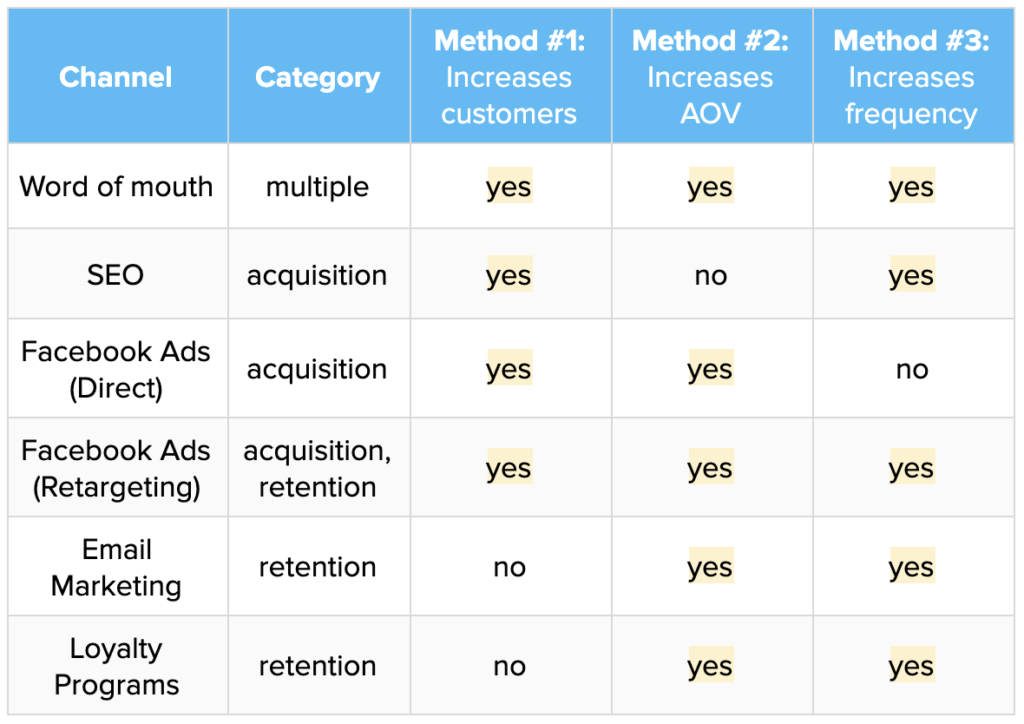
Now yes, customer acquisition is essential for growth, but it’s not the be all, end all. And there’s some pretty compelling math to support the argument for a healthy focus on retention.
From this Harvard Business School analysis:
“The bottom line: increasing customer retention rates by 5% increases profits by 25% to 95%.”
That alone should perk your attention like a Golden Retriever who just caught a whiff of a new batch of burgers on the grill.
Which brings us to the second key aspect of this “retention math” equation:
Not all revenue is created equal.
Here’s why.
The Profitability Question: Why more business isn’t always good business
Here’s another golden nugget from the HBS article I quoted just now.
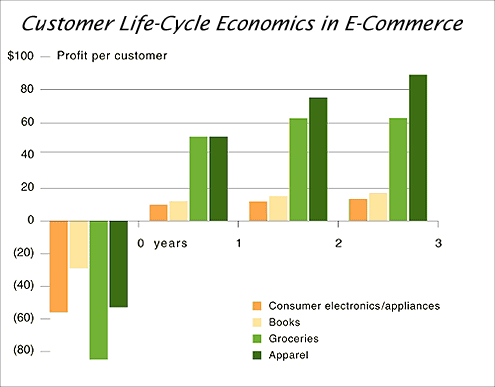
What are we looking at here?
Well what this chart is showing us is that…
Most initial consumer purchases come at a net loss.
The longer that customer is retained, the more profit they generate.
In plain english:
Revenue from new customers is far less profitable than revenue from existing customers.
Aha!
We just learned the same exact lesson Michael Scott learned from Ryan just before it was discovered that he, in fact, started the fire.
The transcript from this encounter:
Michael: So you think you know a lot about business?
Ryan: No, not yet.
Michael: Uh huh.
Ryan: Just started.
Michael: Yeah? Quiz me.
Ryan: I… wouldn’t even know where to start.
Michael: Come on, egghead. Let’s do it.
Dwight: Do it.
Michael: Quiz me up.
Ryan: All right, um… Why have people been rethinking the Microsoft model in the past few years?
Michael: Uh…
Ryan: Is it cheaper to sign a new customer? Or to keep an existing customer?
Dwight: Keep an existing…
Michael: [to Dwight] Shut, it. Can I… can I just do it please? [to Ryan] Uh, it’s equal.
Ryan: It is ten times more expensive to sign a new customer.
Michael: Okay. Yes! It was a trick question.
Dwight: Yeah, but look, I mean, he didn’t need business school. Okay, Michael comes from the school of hard knocks.
This is where our good old friend Customer Acquisition Cost (CAC) comes into play. Let’s take the ecommerce example presented in this Neil Patel post:
“In this example, we take a fictitious ecommerce company that sells organic food products. The company spent $100,000 on advertising last month, and its marketing team says 10,000 new orders were placed. This suggests a CAC of $10, a figure that has no meaning in itself.
If a Mercedes-Benz dealer has a CAC of $10, the management team will be delighted when looking at the year’s financial statements.
However, in the case of this company, the average order placed by customers is $25.00, and it has a markup of 100% on all products. This means that on average, the company makes $12.50 per sale and generates $2.50 from each customer to pay for salaries, web hosting, office space, and other general expenses.”
That $25.00 sale doesn’t look so great after we take our gross margin (which is about 40% on average for 7-8 figure ecommerce stores) and CAC into account, whittling that initial sale down to a measly $2.50 to spread around, which even at 10,000 orders/month gets eaten up quickly.
But…
What happens if that customer comes back to purchase a second time with, let’s say $3 additional spent on a follow-up email campaign?
(E.g. They fell in love with your organic ribeye steaks and decided to order a second time that month after a reminder.)
We now have $50 in revenue from a customer that cost now $13 total to acquire and then retain… and now $12 of that to pay salaries and overhead.
If this trend continues, we end up with almost exactly the chart from the Harvard Business School article:
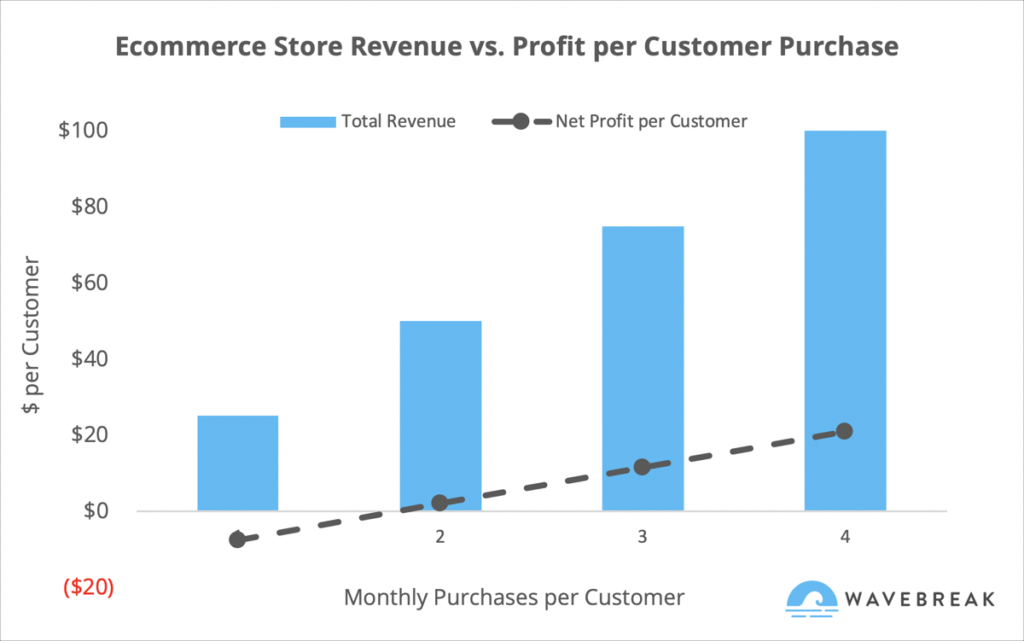

Long story short:
By focusing on retention marketing post-initial-purchase, marketing costs can be significantly reduced or eliminated over time.
And that’s not even taking into account the concept of Brand Elevation.
We’ll talk about this next, but suffice it to say that as your brand becomes more visible, it costs less and less to generate a sale for the same reasons as the example we just illustrated.
In the end, your existing customer base is where the profit lies!
So get gettin’ while the gettin’s good.
The 2nd Pillar: Retention Marketing + Brand = Match Made In Heaven
Here’s a thought experiment for you:
What if I told you you could reliably increase your AOV and purchase frequency with no additional marketing spend?
And then, what if those customers also became evangelists for your brand and actually generated new business for you while they were at it?
And what if, after all of that, they THANKED YOU for it?
Well… Okay this isn’t actually a thought experiment.
It’s a description of the magic of Brand.
What do we mean by brand?
The word “brand” carries with it a whole bunch of baggage…
(For example: It’s become a notorious way for creatives in marketing departments to hide from responsibility for results.)
And because of that, practically-minded entrepreneurs struggle with the idea because it gets easily warped and misused.
In contrast though, we all know the biggest brands crush the competition because they are permanently cemented in people’s minds (think Kleenex).
From Rebrandly:
Brands are the images and ideas consumers think about and connect with when they think about a specific product or service.
In other words…
It’s the image of Jordan flying through the air from the foul line in 1987.
It’s the intoxicating sound of Jony Ive’s voice explaining the Apple manufacturing process (and using sexy-sounding words like “aluminium” and “polycarbonate”).
It’s the combined sense of exhilaration and luxury you feel sitting in the driver’s seat of a freshly-washed, white Porsche Panamera GTS Turbo.
(Which BTW I had the chance to do last week! A man can dream…)
And that brings us to…
Brand Marketing
Which is simply the set of marketing activities companies participate in that aim to generate purchases by way of those feelings the brand generates.
This in contrast to the more tactical direct response marketing approach: a step-by-step pathway for the prospect to find their way to your website, navigate to a product page, and click a button to purchase.
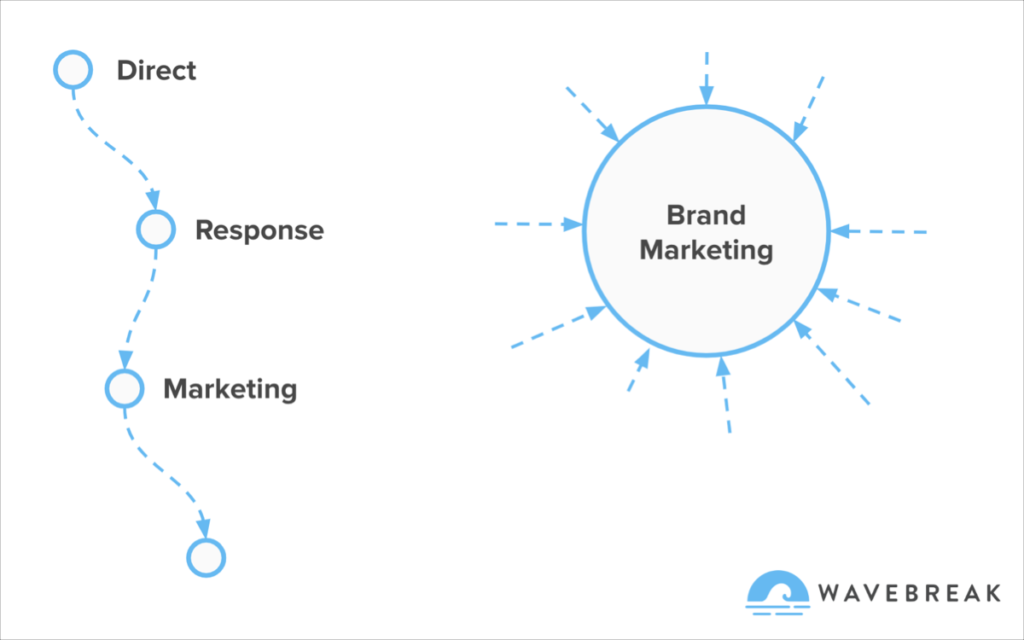
If we think of direct response marketing like a machine, passing new prospects through a series of pre-constructed process steps, then brand marketing would be more like gravity, slowly pulling people into orbit from all directions.
Where brand marketing falls short in terms of data and traceability, it more than makes up for it in the ability to spread like wildfire and efficiently reach vast corners of your target market… when executed correctly.
The Bank of Brand Equity
The other major benefit of building “brand” into your marketing are the accumulation effects.
Like I teased up top, effective brand marketing has the ability to generate more and more purchase activity over time WITHOUT any incremental marketing spend.
In this way, it operates much like a bank.
The more you put in, the more it grows and compounds over time. This is what people trying to sound sophisticated mean when they trot out the term brand equity:
…describes the value of having a well-known brand name, based on the idea that the owner of a well-known brand name can generate more revenue simply from brand recognition.
In other words, the holy grail of marketing.
Retention Marketing + Brand: The match made in heaven
One of the biggest mistakes we see ALL the time in ecommerce, is when a premium brand sells high-end products at a premium price…
And then borderline SPAMs you with emails and follow up communication that look, sound, and feel very cheap and transactional.
(We won’t name names, but you know exactly what I’m talking about.)
We not only believe that this is harmful and creates buyer’s remorse where none is warranted, but that’s also FAR LESS PROFITABLE in the end.
As we’ve covered before:
Real relationships with customers are what build the reputation and brand loyalty that keeps them coming back, again and again.
Done correctly, this is far more powerful than cranking through the bare minimum to turn a quick buck.
As Al Ries, branding mastermind, puts it:
You build brand loyalty in a supermarket the same way you build mate loyalty in a marriage. You get there first and then be careful not to give them a reason to switch.
As you do well by your customer, and your brand becomes more visible, it costs less and less to generate a sale. Think of the implications on the customer acquisition cost example we illustrated above:
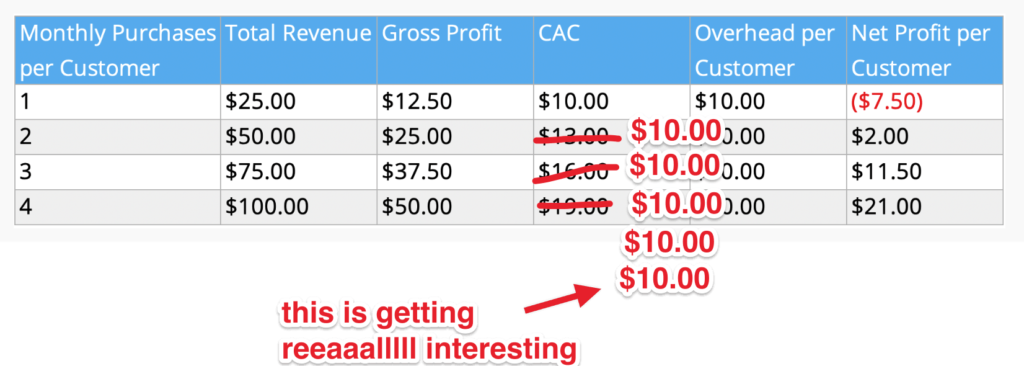
This is what we refer to here at Wavebreak as Brand Elevation.
And it’s a perfect complimentary tool to the objectives of retention marketing.
The Elements of Brand Elevation
Straight from the Strategy Team here at Wavebreak, are some of the key components to go into elevating the brand with email along with some actual Wavebreak client emails in action to illustrate the principle.
Now, the real beauty of email is that it’s both a short term and long term revenue generation solution… when you do it right. When it comes to building a powerful brand, it’s the glue that ties it all together. Because in the short-term the immediate effects of improved retention are undeniable.
Even without the brand element, email can drive significant retention revenue. But in the long-term as the Brand Elevation efforts start to take effect, and as you make more and more deposits at the bank of brand equity…
It makes your business more and more profitable over time.
Now yes, this is Retention Marketing 201 stuff. We’re not just talking about the basics here.
But get it right, and it will serve you for years to come.
First: Visual consistency
Even though email attention spans have been increasing, you still only have a few precious seconds of attention with each send to make your mark.
When people look at your emails, they should know it’s coming from your brand before they see the name.
Lancer Skincare’s emails are the perfect example of this principle in action.
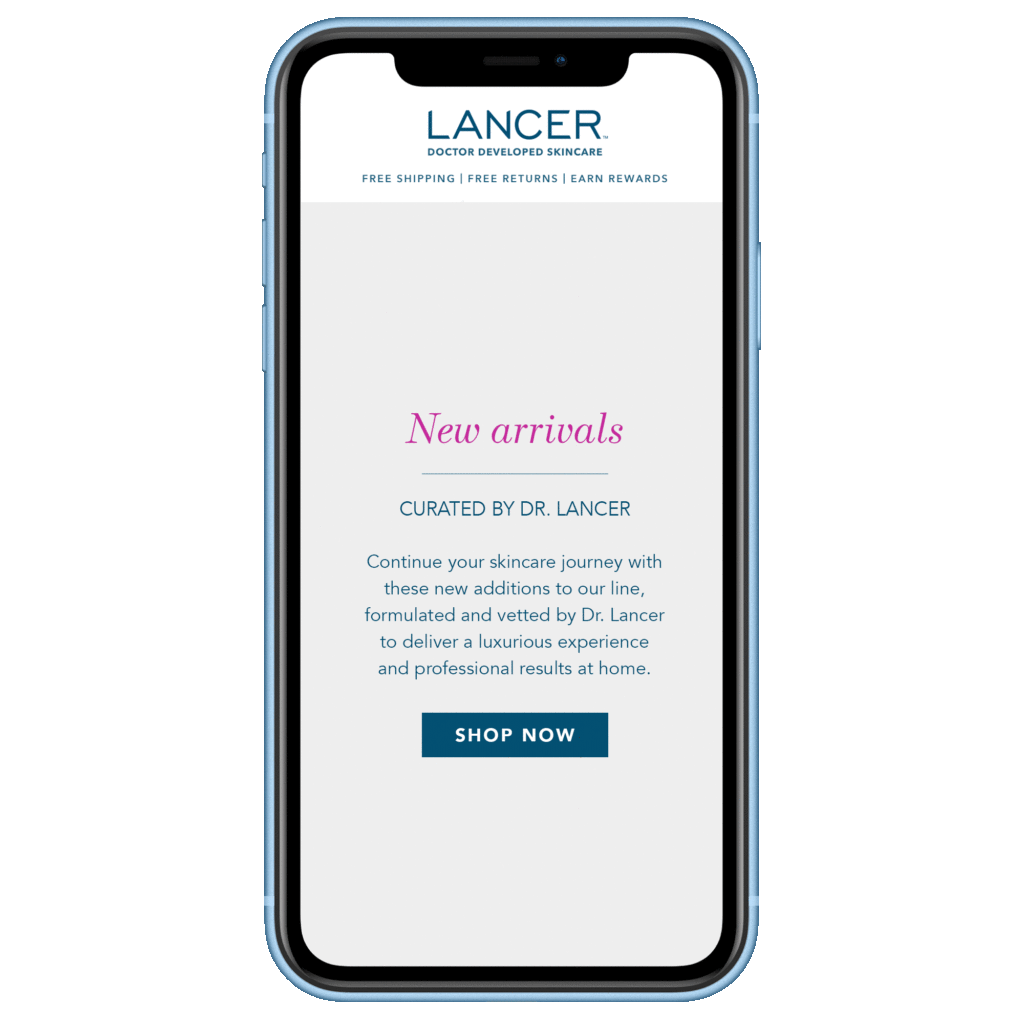
Their minimalist and distinctive brand look and feel is carried through from the product, to the website, to each and every email that gets sent.
Visual branding elements such as color, font, etc. should be uniform. Use a consistent email template to really lock this in.
The same goes for photography: any photography associated with the brand should exhibit the same attributes every time.
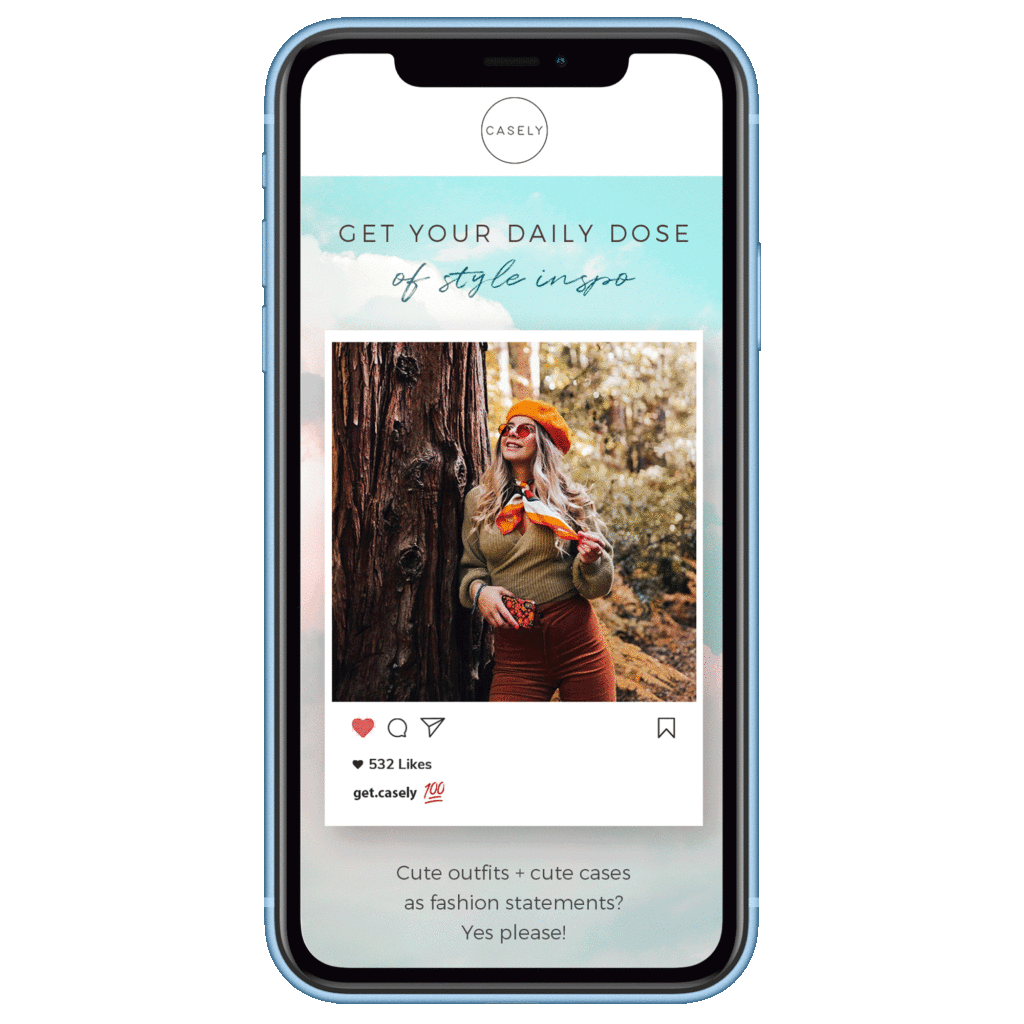
For example, our client Casely does an excellent job of capturing a consistent ethos in their product photos that map perfectly to the IG selfie demographic.
Second: Consistency of voice
Simply put, the better you know your audience and can speak in your brand’s unique voice that matches their language, the more you build trust over time. Make sure to then speak the same way in your copy across email, landing pages, social media, etc.
Our client Moonglow does an excellent job in this department, building their brand voice around a highly unique connection between their products and the phases of the moon.
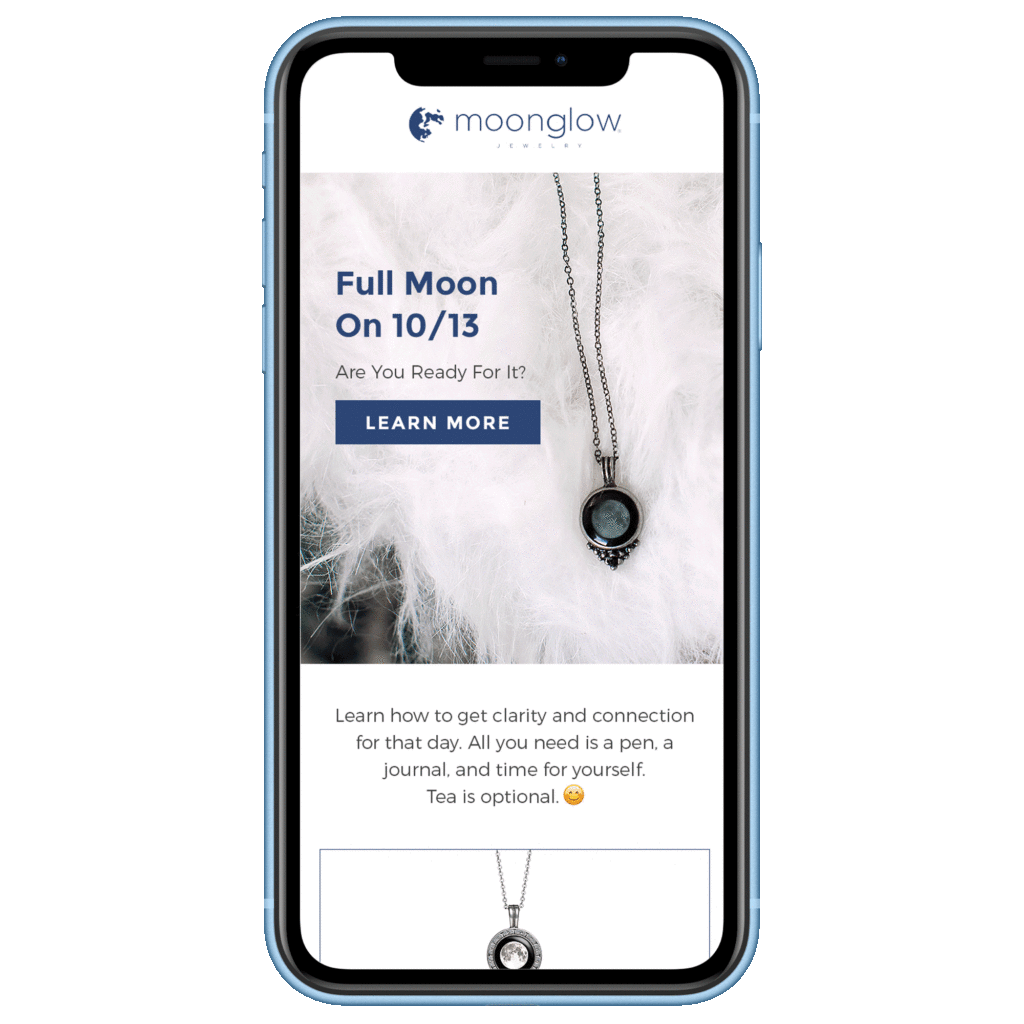
You know you got this right when you can create an imaginary “mascot” for your brand and it would have defined character traits, just like a real person.
Further, have strong, clear CTAs (calls to action). The same rules for good communication apply in email as well. A.k.a. don’t beat around the bush. Everyone likes and appreciates directness and clarity.
Remember: telling is selling.
You need to communicate your message with enough frequency for your prospects to actually “hear it.”
This means that you should be telling your brand’s story, starting with your Welcome Series, Abandoned Carts, and Browse Abandonment emails, and extending out well beyond the point of sale. These initial points of contact especially are crucial in solidifying your brand image.
Third: Segment, personalize, and speak like a human
While your brand voice should be consistent, it should also be diversified in context for different segments, audiences, and occasions.
Hammering home the same message over and over again is the perfect recipe for having your customers tune you out post-purchase.In other words: speak and act like a human… even in the most serious, buttoned-down industries out there.
At the end of the day, email is a retention marketing tool aimed primarily at staying top of mind.
Which means, keep your audience engaged and don’t just sell, sell, sell. Stay top-of-mind for when the time comes and they’ll think of you, talk about you, and buy from you… again and again.
The 3rd Pillar: Retention and The Seasonality Solution
The highs are high, and the lows are low.
This is what the seasonal cycle of business feels like for ecommerce stores who aren’t regularly investing in retention.
Why?
Because without the ability to generate new business from your existing base of customers, you find yourself at the mercy of the market… and as a result experience the (sometimes violent) ups and downs directly like a bad trip to Six Flags.
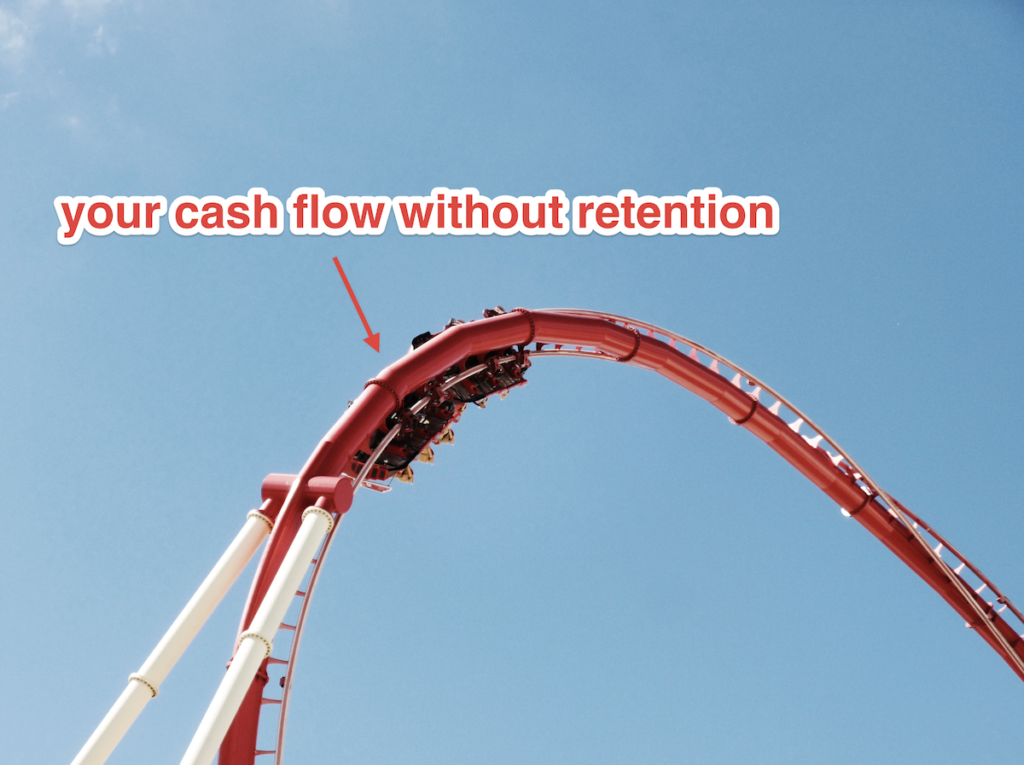
This is why we’ve dubbed Seasonality as the third retention marketing pillar.
Because buffering the revenue roller coaster reduces risk, future-proofs your business, and reduces the panic-inducing, fire-drill producing stress felt both by you and your team.
Let’s dig in.
Ecommerce Seasonality: The roller coaster ride across the industry
First things first, seasonality isn’t anything new, and it’s not limited to ecommerce.
For example, let’s take a look at the general retail seasonality data from the U.S. Census Bureau. In 2019, the seasonal trend for all of retail looked something like this:
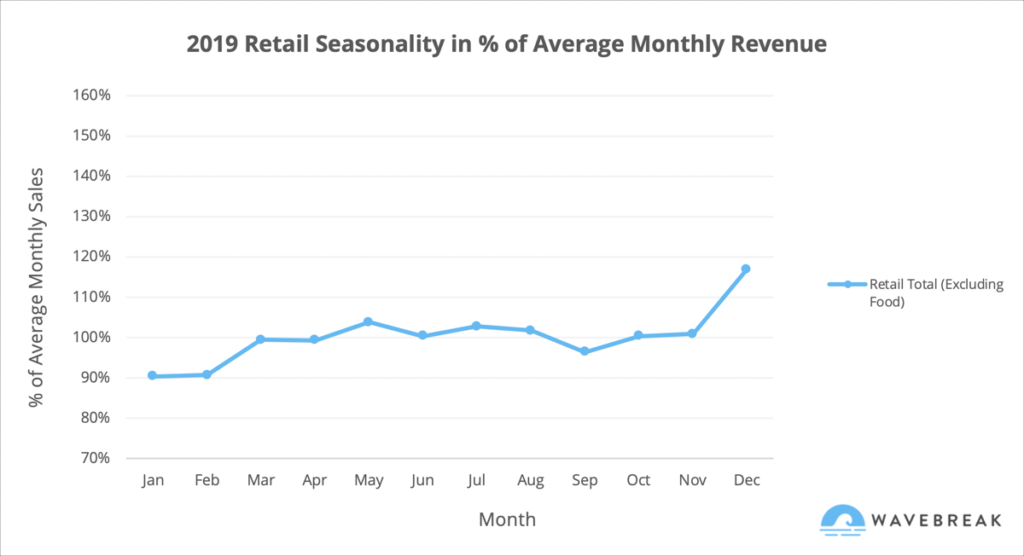
A slightly depressed start to the year followed by fairly stable sales performance throughout the year…
And a big ‘ole bump in December for the holidays. Nothin’ major to see here… until we look across specific industries that is.
Here’s how a few different verticals stack up:
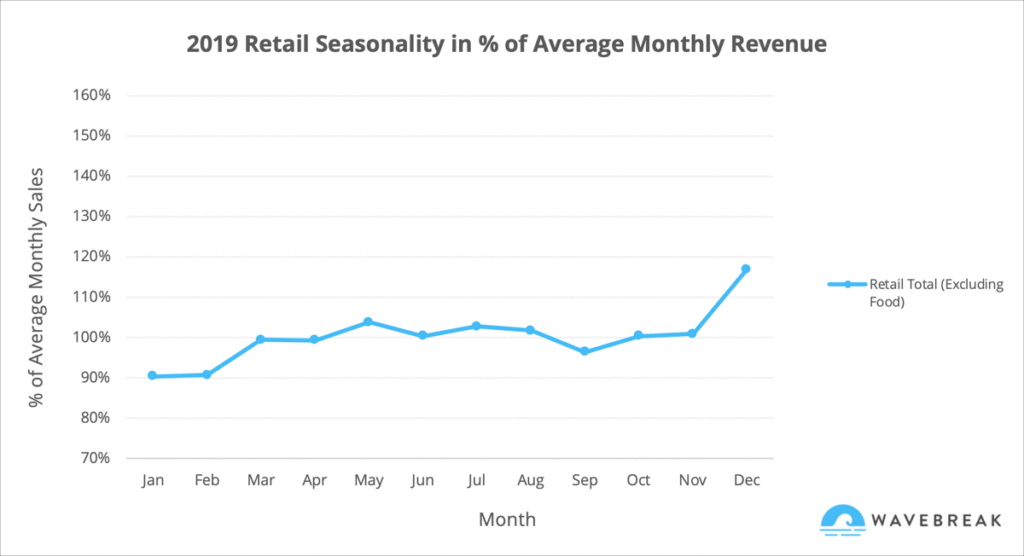
As you can see there’s a significant amount of variation across different retail categories, with more frequent needs like health and personal care showing a more stable seasonal trend…
And less frequent, more disposable purchases like clothing and sporting goods producing some of the wildest swings.
Two conclusions from this data:
Every retail business has some seasonal ups and downs.
Each retail business has their own unique seasonal trend to contend with.
Let’s take a look at what drives seasonality for ecommerce stores.
What drives ecommerce seasonality?
Kunal Khullar over at SEM Rush does an excellent job of breaking down what influences seasonality for ecommerce stores. As he puts it:
Seasonal variables largely depend upon 4 key factors:
The Business Niche and Popularity
Demographics
Weather
Events/Holidays
And goes on to illustrate the point through some fascinating Google Trends analysis. For example:
“Rain jackets” volume spikes in April and May when it rains the most.
“Warm jackets” volume spikes in November and December, the start of the cold season.
And predictably, “gifts” volume peaks around the holidays.
Taking this analysis one step further let’s apply this thought process to the three Wavebreak client examples we introduced in the Brand section.
First, let’s take a look at what Lancer Skincare’s seasonality curve might look like. If we plug “skin care” into Google Trends, we get a pretty stable graph:
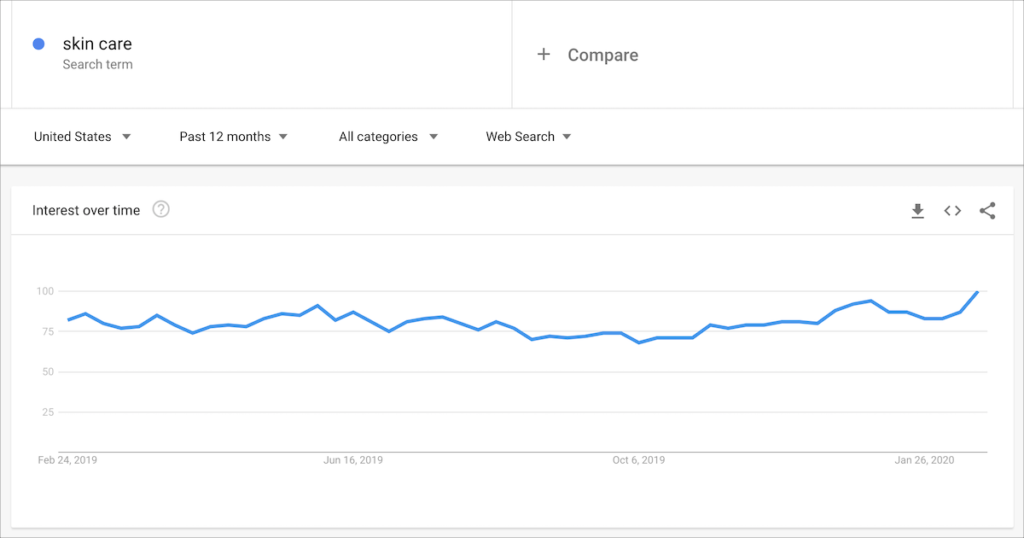
A slight increase in January… corresponding with “new year, new me” perhaps? But steady nonetheless.
No real seasonality issue here.
Casely though, is presented with a different story. When we drop in a “phone case” search, we end up with a trend line that much more closely reflects the volatility we see in the general clothing retail trends:
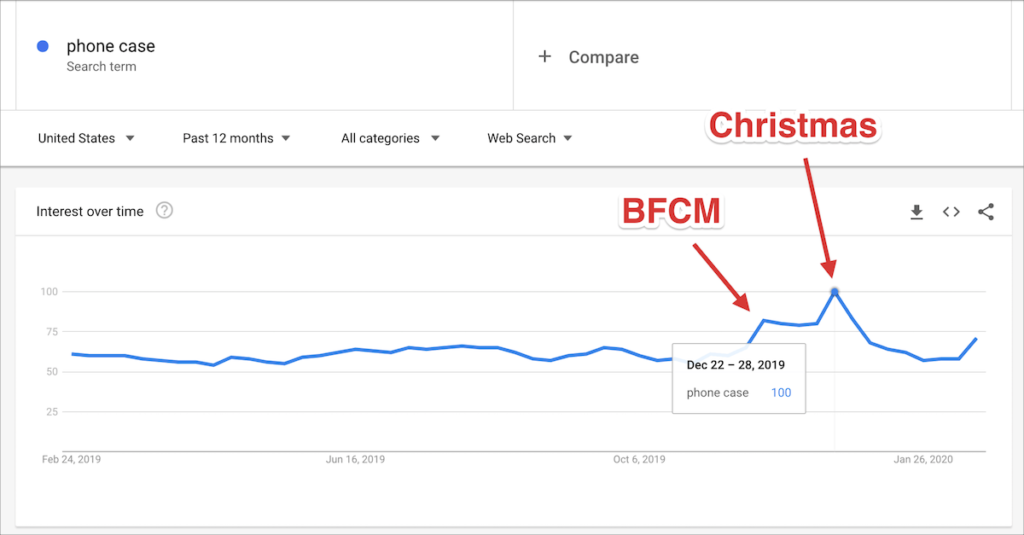
Their challenge may not be so much withstanding a big dip in demand, but instead making the most of those two seasonal high points to close out the year and provide momentum heading into January.
Finally, let’s look at a potential search corresponding to Moonglow’s jewelery products. A “necklace” Trends search produces the following:
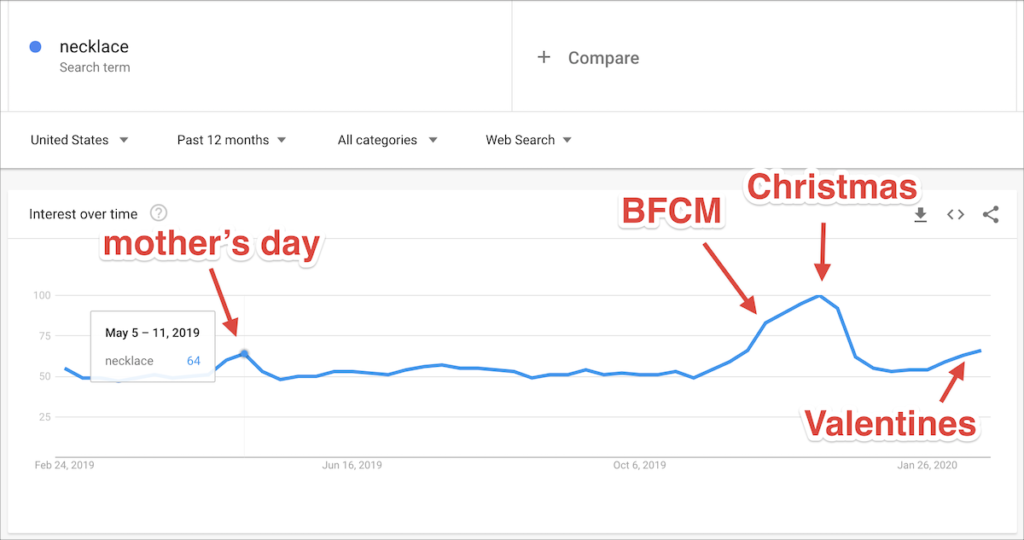
Which indicates a similar end-of-year BFCM and holidays spike, with two additional bumps around Mother’s Day and Valentine’s Day.
All of which is to say, each businesses’ unique seasonality graph will require a different strategic approach.
However, there’s one thing they all have in common…
The Impact of Retention Marketing on Seasonality
Across the board, retention marketing is one of the most reliable methods for smoothing out the seasonal revenue roller coaster by:
Maximizing the upside during spikes in interest.
Minimizing the downside when demand cools off.
Let’s take a look at what this might look like in practice. Let’s say that this hypothetical sporting goods store generates around $300k in revenue during slow months, with a big spike in November and December. Let’s also say that given all of their overhead and ad spend, their breakeven point is on average $350k/mo. Which means that, unfortunately, during slow months they’re in the hole and run into major cash flow issues.
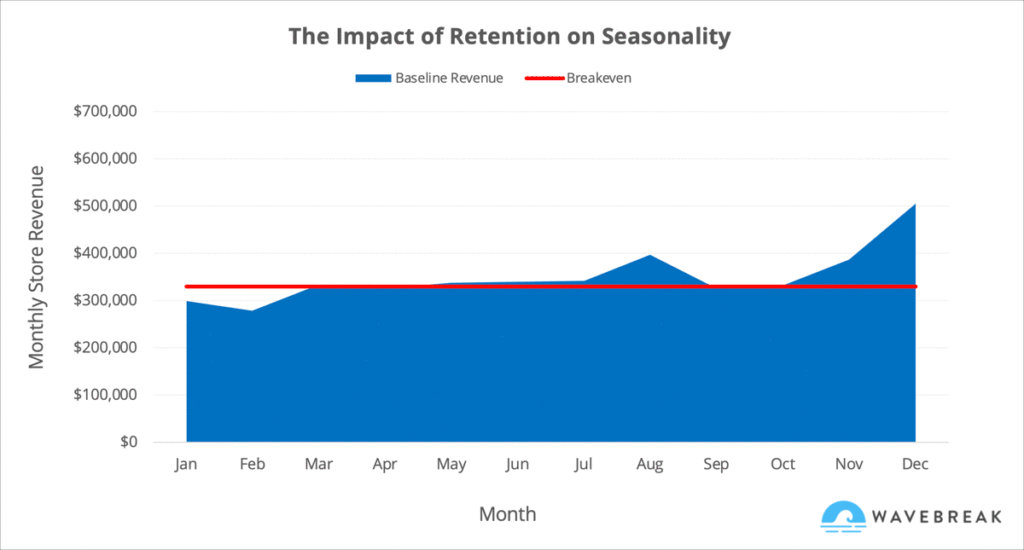
Now let’s add in 20-30% retention revenue generated from a consistent email marketing effort.
Although we have a slight bump up in breakeven to cover COGS and the program cost, voila! Even during the worst months of the year we’re profitable and cash flow positive. And during the best months of the year… well, let’s just say we’re raking it in.
Now, how do we accomplish this?
The Seasonality Solution: Our Seasonal Email Best Practices
Here’s what we recommend here at Wavebreak in order to curb the downturns and capitalize on the upturns.
First: You need to commit to your marketing, even through downturns.
The biggest mistake I see stores make is turning off the focus on email when things aren’t strong. Sure, email revenue does follow the flow of the business and will dip in off months…
But the problem is it’s like flywheel: if you take your foot of the gas, you lose momentum. Then when you go back to email when revenues recover, you haven’t built trust in the interim.
So don’t flip-flop because there’s a switching cost (consistency breeds efficient) and certainly don’t stop altogether. If anything, during slow months you should focus and double down on marketing.
Plus, when acquisition is weakest, email is the strongest.
Yes, you still need people coming in on the front end in order for any of this to work. But it is also the case that when customer acquisition slows, email maintains and becomes a larger overall percentage of revenue during these periods.
Second: Consistency is the essential ingredient.
Even for stores not consciously letting off the retention marketing during seasonal dips, they still struggle to maintain week-in, week-out consistency… and this damages their results.
Instead, you need to keep the consistency up throughout the year.
Yes, this will help to keep repeat purchases rolling in throughout. But in particular, this will do the job of priming your list in preparation for the big seasonal spikes you want to take advantage of.
For example, BFCM emails pack a wayyy bigger punch when your list is warm and engaged ahead of time.
Third: Your marketing operates on a 90 day delay.
And this is what produces the revenue roller coaster effect.
It goes something like this:
Get busy → stop what was working → come up for air → realize your sales have slowed down → panic and scramble to figure out how to sell quickly.
Which is very similar to the yo-yo-diet cycle:
Go on diet → start feeling good → treat yourself → realize that you’ve gained back what you lost → panic and try the next diet fad.
The results you’re seeing today were generated by the legwork you put in 90 days ago. Again, reinforcing the fact that you need to commit to the long game.
If you cut it now, you’re going to feel the pain 90 days from now.
But if you double down?
Well… you can do the math.
Your Next Steps
Everything we’ve just covered comes full circle to what I mentioned up top:
The opportunity here is in getting more out of what you’ve already got.
For example, it’s not unusual for us here at Wavebreak to generate $300k/month in additional retention revenue for the clients we serve.
It’s profitable, sustainable, and supports the long-term growth of the business.
And that’s what retention is all about.
But, there’s a catch…
You have to take action in order to bring all of those juicy numbers to life.
Here’s what to do next.
Run some numbers. Start with our simple calculator.
Identify your opportunities. What could a renewed focus on retention do to your business? Come up with some ideas for actions you can take.
Reach out for help. This is our bread and butter. And our discovery process is designed to evaluate exactly what we’ve talked about here. If you’re interested, fill out this form and book a time. We’d love to run the numbers with you.
No matter how busy we get here at Wavebreak, we always make time to speak with ecommerce business owners every single week.
But with that said, the calendar books up quickly so grab a spot now if you wanna chat.
Talk soon!

